Double Prints by Dorothy & Chaim Koppelman
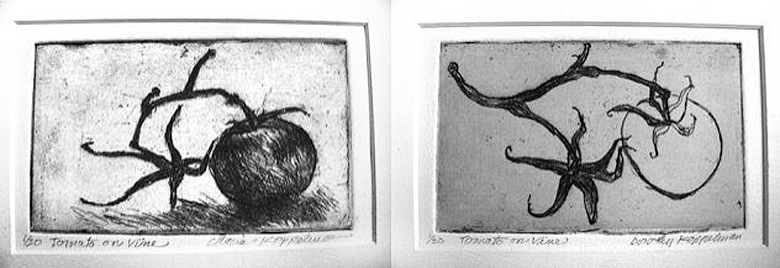
JUNE 2017—FEBRUARY 2019
For many years, two important American artists— Aesthetic Realism consultants Chaim and Dorothy Koppelman, husband and wife—made etchings that arose from their looking together at the same objects: for instance, a tomato, a row of bottles, a coat, a water tower.
Now, the Terrain shows a selection from the hundreds of prints they created. In these double prints, framed together, we see how the perceptions of two artists are very different and yet this Aesthetic Realism principle, stated by Eli Siegel, is grandly true of both:
“All beauty is a making one of opposites, and the making one of opposites is what we are going after in ourselves.”
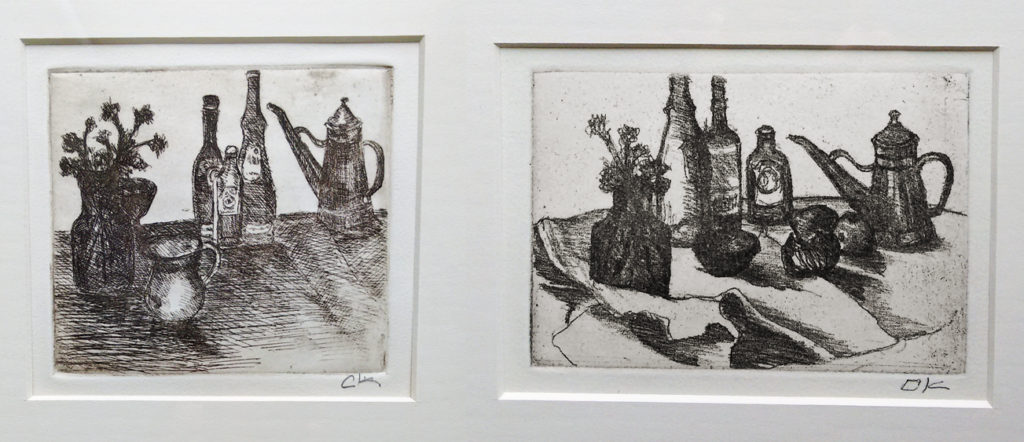
Artists’ Statement
“We are tremendously grateful to Aesthetic Realism and Eli Siegel because we learned that our purpose—as people, as artists, as husband and wife—is to like the world, that is, to be fair to the things and people in it. In a statement for our two-person exhibition of paintings and prints in 2009, we said, ‘The principle he stated is true; it is what the centuries have waited for: All beauty is a making one of opposites, and the making one of opposites is what we are going after in ourselves.’
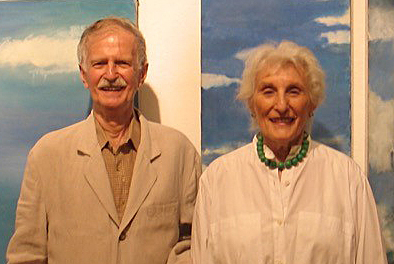
Early in our study of Aesthetic Realism, Mr. Siegel suggested we each draw an object we care for, if possible every day, and to write three sentences about it. And so, in the 1940’s, both of us began to keep Object Books, in which we drew and wrote sentences. As we did, we saw that every object—no matter how big or how small, whether a landscape or a little bean—is a situation of opposites: freedom and order, clarity and mystery, energy and repose, the contained and expansive, roughness and smoothness, and more.
Then, in the mid 1970’s, we began doing etchings, both looking at the same objects—a rocking chair, candlesticks, lemons, a bird, a tomato, roof and sky. Every time we worked we learned about the world, about ourselves, and each other—the sameness and difference of how we each saw.
We learned from Eli Siegel, who was himself magnificently fair to things and to people, to ask: What do things deserve? The desire to know things, to value an object truly, to give it one’s attention, is the opponent of contempt, the “addition to self through the lessening of something else.” Studying an object is, as Eli Siegel said, a “stepping stone to liking the world”—and to liking yourself at the same time.”
—Dorothy Koppelman (1920 – 2017)
Chaim Koppelman (1920 – 2009)
Selected Prints from the Exhibition
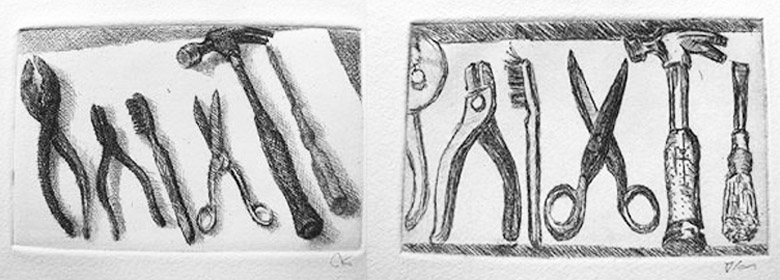
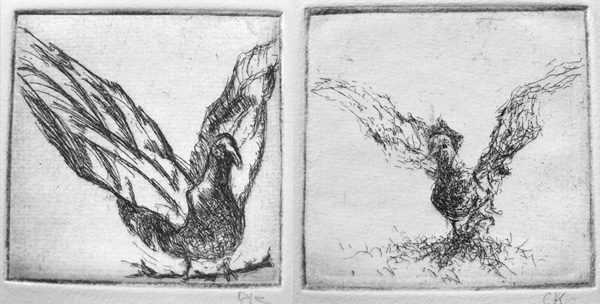
Comment on Open Box with Fruits
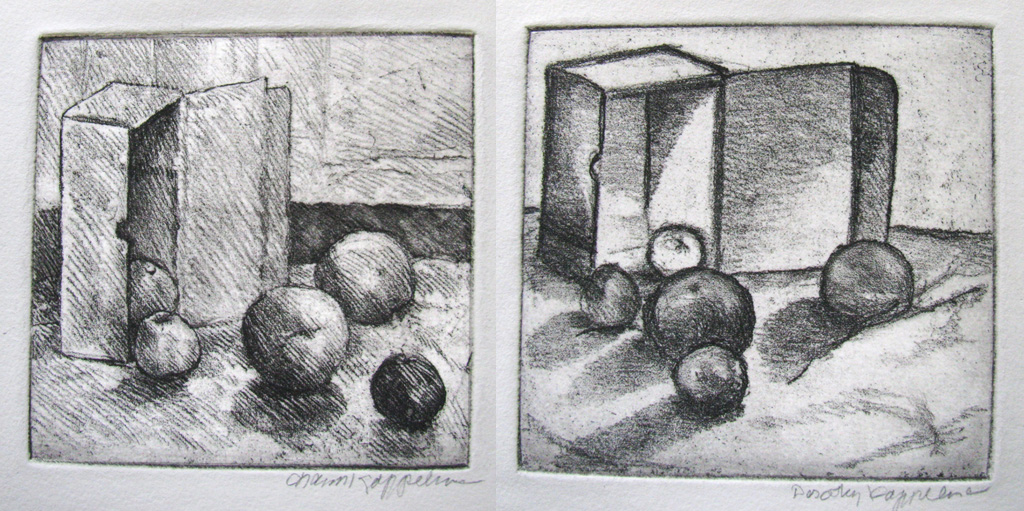
In these two prints of an Open Box with Fruits, there’s a drama of stillness and activity, and an atmosphere of mystery, including in how they have different relations of dark and light. There’s drama, too, in the relation of the upright, rectangular box, with its inside and outside, and the five rotund fruits.
In the print on the left, Chaim Koppelman’s, the smaller fruit to the right stands out because it is darker, and because it is a beginning point for a diagonal going from the bottom right corner to the top left corner. I see this fruit as speaking to the others. In Dorothy Koppelman’s print, you notice the fruit that’s still in the box—you could say it’s in the spotlight, while hugging that box. Perhaps the other fruits are encouraging it to come out. The same fruit still in the box in Chaim Koppelman’s print is shy, too.
I love the care with which the shadows are done—one a softer effect, the other sharper—and in both making for a feeling of substance, motion, and mystery.” —Nancy Huntting
